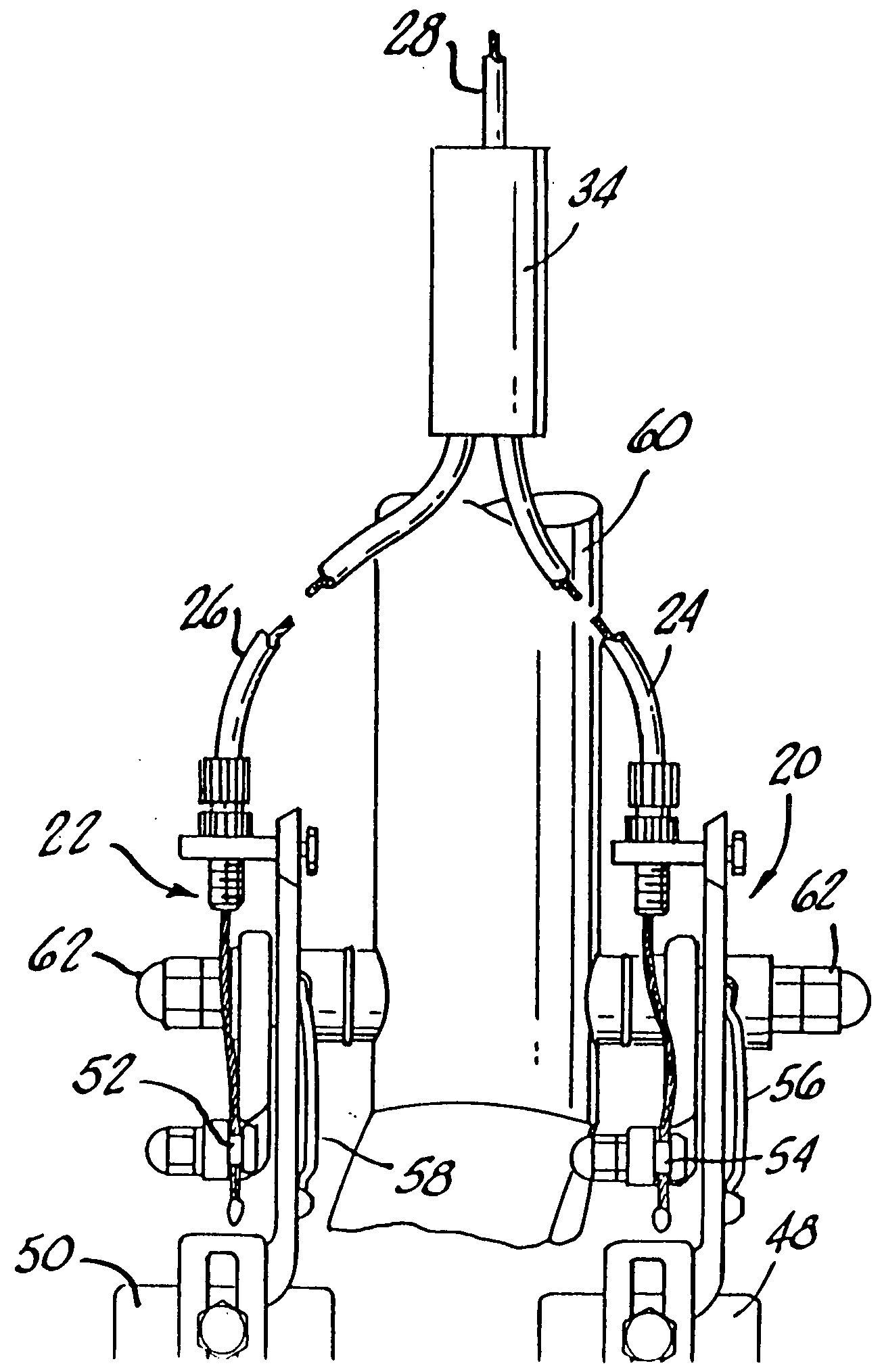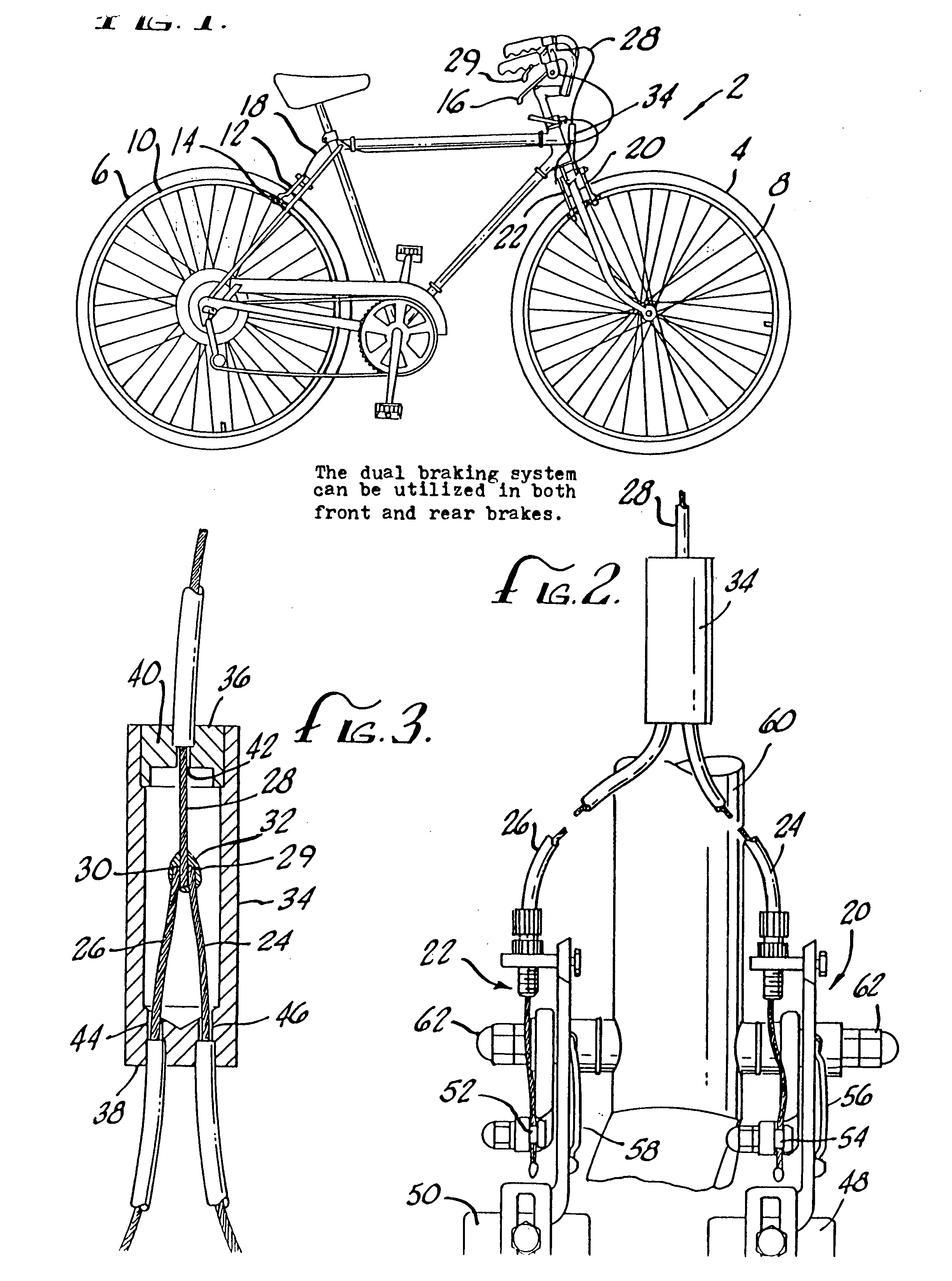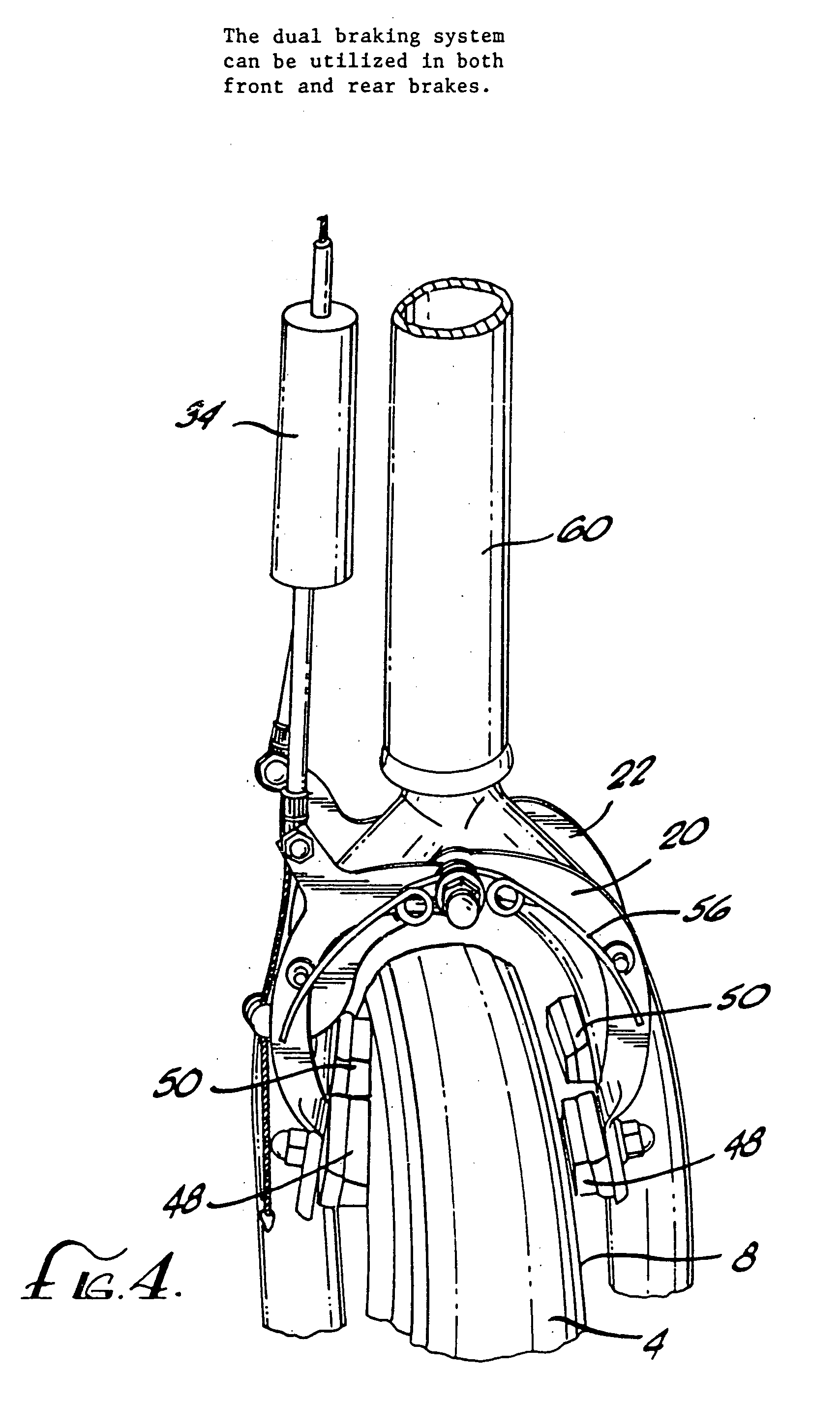Dual bicycle braking system
- Summary
- Abstract
- Description
- Claims
- Application Information
AI Technical Summary
Benefits of technology
Problems solved by technology
Method used
Image
Examples
Embodiment Construction
[0019]FIG. 1 illustrates a conventional bicycle 2 having a front wheel 4 and a rear wheel 6. Said front and rear wheels having front and rear rim surfaces 8 and 10, respectively. Said rear rim surface is engaged by a rear brake 12 of the conventional spring loaded caliper variety having conventional brake pads 14 (only one shown). The rear brake is controlled by a hand brake lever 16 via a rear brake cable 18. The entire rear brake system is conventional in nature.
[0020]The de-acceleration of the rotation of the front wheel 4 is controlled by a dual braking system. The dual braking system is comprised of a first caliper brake 20 and a second caliper brake 22. The first caliper brake 20 is controlled by a short actuating cable 24. The second caliper brake 22 is controlled by a long actuating cable 26. The two actuating cables 24, 26 are referred to as short and long because the length of the short actuating cable 24 is less than that of the long actuating cable 26. The two actuating ...
PUM
 Login to View More
Login to View More Abstract
Description
Claims
Application Information
 Login to View More
Login to View More - R&D
- Intellectual Property
- Life Sciences
- Materials
- Tech Scout
- Unparalleled Data Quality
- Higher Quality Content
- 60% Fewer Hallucinations
Browse by: Latest US Patents, China's latest patents, Technical Efficacy Thesaurus, Application Domain, Technology Topic, Popular Technical Reports.
© 2025 PatSnap. All rights reserved.Legal|Privacy policy|Modern Slavery Act Transparency Statement|Sitemap|About US| Contact US: help@patsnap.com



